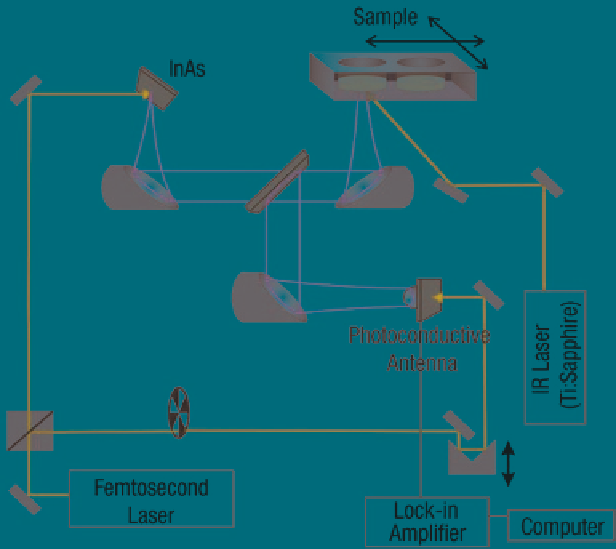Biomedical Engineering Reference
In-Depth Information
Fig. 3
Schematic of reflection-mode THz imaging setup with infrared (IR) laser for the induction
of surface plasma polaritons (From Oh et al. (
2009
). Copyright © 2009 by Optical Society of
America. Reprinted by permission of Optical Society of America)
2.2
THz Characteristics of Water
Water is the most abundant material in living cells and organs, and its characteristics
play an important role in diagnosis based on the use of THz waves. THz waves are
sensitive to the dynamics of water molecules because their rotational and vibrational
energies and hydrogen bond stretching energy lie in the THz region. Another impor-
tant feature is that the low energy of the THz waves prevents ionization of the water
molecules. Therefore, THz waves have been utilized to study the microscopic and
macroscopic characteristics of water. The microscopic dynamics between water
and a solute resulted in a larger absorption of THz waves due to the coherent oscil-
lation between the hydration water and the solute and caused the hydrogen bond
rearrangement process to slow down (Heugen et al.
2006
). For THz molecular
imaging for nanoparticle delivery, the macroscopic characteristics are more important
because the TMI technique is based on a principle that relies on the temperature-
dependent property of bulk water, as will be explained in the next section. As can
be seen in Fig.
4
, the power absorption and the refractive index of liquid water are
highly dependent on temperature because it affects bonding strength. In addition,

Search WWH ::

Custom Search